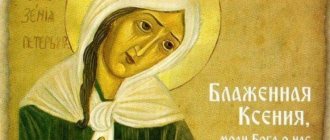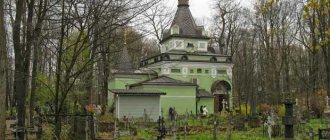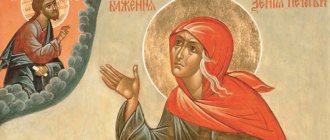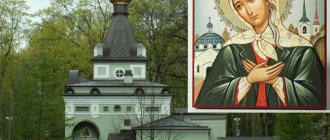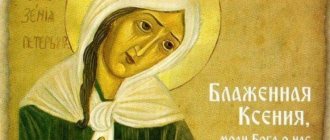St. Petersburg is one of the northern cities of Russia with a population of more than 1 million people. Among cities entirely located in Europe, it ranks 3rd in population, behind only Moscow and London.
This city is famous for its white nights and a huge number of attractions that tourists from all over the world come to see every year. The most beautiful and amazing place that every tourist tries to visit is the Temple of Xenia of St. Petersburg.
Historical events
The Temple of Xenia of Petersburg in St. Petersburg, which is also often called the Cathedral of the Smolensk Icon of the Mother of God, has a rich history. Initially, the temple was located in a small wooden church, erected on the site of the Smolensk cemetery in the 18th century. Twice during its existence the building fell into disrepair and the reason for this was flooding.
After the last flood in 1824, a stone church was erected and gradually the boundaries were added to it and dedicated to various saints. The boundary of the Smolensk Icon of the Mother of God was also erected, which later became the main building.
During the construction of the temple in honor of the Smolensk Icon, work was suspended for a while, and the reason for this was serious difficulties in lifting building materials to the top.
Temple of the Smolensk Icon of the Mother of God in St. Petersburg
It was at that time that Mother Ksenia wandered the streets of St. Petersburg, whose presence brought benefits to those around her: work went well, health improved. And it was she who began to secretly help the builders at night, lifting bricks onto the scaffolding. This is how a fragile elderly woman helped build a temple for several years, in secret from all the townspeople.
And it was possible to find out who exactly was helping the builders only after one night they simply began to monitor the construction site. It was in honor of this holy woman that the border was consecrated, which is why it is mistakenly called the Church of St. Xenia of Petersburg. It was at the Smolensk cemetery that Blessed Ksenia was buried.
Residents of St. Petersburg greatly revered the blessed one and noticed that the soil from her grave was healing; as a result, the entire mound from it was carried away by pilgrims. The tombstone also disappeared; the pilgrims dismantled it into small pieces, like a shrine. That is why it was decided to build a chapel on the saint’s grave.
Construction of the chapel began in 1901 and continued for a year. An iconostasis made of marble was installed at the head, an icon of the crucified Jesus Christ was made from mosaics, in front of which a lamp burned all the time. The facades were decorated with arches, and beautiful stained glass windows were created on the windows.
In the 40th year of the 20th century, the chapel was closed and only 6 years later did pilgrims and local residents ensure that the chapel was reopened. It took a long time to restore it, because during the Second World War the chapel was completely looted. And in 1960, the chapel was closed again, and within its walls it was decided to set up a workshop for making sculptures.
And only 30 years later the decision was made to restore the chapel. The restoration took many years, because all the work was carried out with donations from pilgrims and local parishioners.
Life of Blessed Xenia
A prosperous woman who lived in St. Petersburg in the mid-18th century suddenly became a twenty-six-year-old widow. The imminent death of her beloved husband without repentance and communion shocked Ksenia so much that, from the point of view of her loved ones, she began to commit “crazy” acts. Having distributed all her property to poor people, including her house, she devoted her life to atonement for the sins of her husband, which he did not have time to atone for, choosing a method that was strange to those around him.
Assuring that her husband was alive, she walked around in his clothes, responded only to his name and prayed and prayed. The inhabitants of the city first persecuted her, and then got used to the holy fool at the Church of the Apostle Matthew. Without doing harm to anyone, she asked the Lord for them and distributed the money she received to other beggars. Over time, people noticed that those who warmed and fed Ksenia received a hundredfold from God. Things were going uphill, sick loved ones were recovering, matters of the heart were getting better.
When the church was closed for the night, Ksenia went to pray in the field. Kneeling in winter and offering prayers to the Almighty, she acquired the gift of clairvoyance, which she generously shared with those around her. Blessed Ksenia loved people, helped them in any way she could, without asking for anything for herself. People believed her, asked for help, and asked for intercession. Many good deeds are described in her life. Among others, anonymous help at night for the builders of the church at the Smolensk cemetery in St. Petersburg, where she was buried, having died at the age of 71. That church no longer exists, the chapel erected in memory of Xenia has also been destroyed, and people, having built a new one, still go to her grave asking for help.
Architecture, appearance
The Temple of Xenia of Petersburg in St. Petersburg was built according to the design of the architect A. Vseslavin. He created his project in pseudo-Russian style. This small building is a famous landmark of the Smolensk cemetery, which is located on Vasilyevsky Island.
The temple was erected in the style of Russian classicism using a modest image and a minimal set of additional fragments. Its shape resembles a rectangle, decorated with round drums in the Byzantine style. A bell tower, erected in two tiers, is attached to the building.
The ensemble of buildings is crowned with a small roof with a gilded onion and a cross.
The history of the chapel
In 1810, the venerable servant of God left this mortal world, and a small burial mound was erected at the burial site. However, believers who recognized the miraculous power of Xenia of St. Petersburg traditionally took with them a certain amount of burial soil after prayer. After a while, there was practically no embankment left here, and the newly created hill also quickly disappeared. Later, a stone slab was installed at the burial site, but this too was gradually dismantled by visiting pilgrims.
- Finally, the virtuous priesthood and secular benefactors decided to build a religious building in honor of the holy fool, Mother Xenia. The chapel with two small windows located on the sides was erected in 1902. A massive iron door was installed in the western part of the building, and an oak iconostasis was installed in the eastern part. On the outside, above the entrance door, the name of the Venerable Slave Xenia was inscribed.
- The small chapel was created in the pseudo-Russian style; A. Vseslavin was appointed as the author of the architectural project. The facade of the building was decorated with semicircular kokoshniks, the arches that were located on the extension were symbolically decorated with mosaic images of Xenia and the Savior Christ.
- The small windows of the chapel are decorated with elegant stained glass windows. The structure of the building was completed by a small roof with a scaly structure. On this roof there was an onion-shaped gilded dome with an Orthodox cross. The main decoration of the interior was the marble iconostasis, on the surface of which the mosaic face of the crucified Messiah shone. There was also a tombstone here.
- The Church of the Smolensk Face of the Mother of God and the nearby chapel of St. Xenia were closed in 1940. The Bolsheviks burned the miraculous faces, dismantled the marble slabs, and melted down precious parts of the buildings. In 1946, at the numerous requests of virtuous laity, the chapel was renovated and opened to the public. However, after 15 years, her religious activities were suspended again, and the interior was converted into a workshop for sculptural work. Some eyewitnesses claim that any crafts here turned into a pile of shards the next day.
Reliquary with the relics of Saint Xenia of Petersburg
In 1984, the chapel was solemnly transferred to the management of the community of the Church of the Smolensk Icon of the Mother of God. Three years later she was consecrated, and in 1988, the godly Ksenia was solemnly canonized by the Russian Orthodox Church.
Interior decoration
The interior decoration is made in pseudo-Russian style. Icons are hung on the walls, and an iconostasis is installed at the head of the tomb. In the very center stands a white marble sarcophagus.
The windows have bright stained glass windows, through which the sun enters and plays bright reflections on the floor and walls.
Shrines
The Temple of Xenia of Petersburg in St. Petersburg is not only a place where locals and visitors come to pray, but also a place where the relics of the Saint are located. The relics are located under a snow-white marble sarcophagus. It is freely accessible. After standing in line, you can kiss the sarcophagus and ask for mercy.
Often they bring flowers to the relics, light candles and pray. Only true faith and a request with a pure heart will help the one who venerated the relics of the Saint.
After venerating the relics and saying a prayer and request, when the answer has been received and the Saint has helped in what was asked of her, it is very important to return to the temple again to thank her. To do this, it will be enough to simply say words of gratitude from the bottom of your heart.
It is believed that the relics of Saint Xenia have not been found to this day. Many believers from St. Petersburg believe that the shrine needs to be opened and its particles sent to many cities in Russia, so that everyone who wants to seek help has such an opportunity.
Ksenia helps everyone, without exception, if you turn to her with an open heart.
She helps:
- come to faith;
- To find a job;
- overcome even the most serious illness;
- arrange family life.
For a saint, there are no unimportant requests; you can turn to her with prayer in any situation and you will definitely find a way out.
History[edit]
On the outskirts of the city of Klin, in the densely populated village of 31st Oktyabrya (6th microdistrict), there was no church until the end of the 20th century. Believers had to travel a long time to get to the nearest Sorrow Church by bus. The formation of an Orthodox community was urgently needed here. Residents of a remote village approached the dean of the Klin district, Archpriest Boris Balashov, with a request to open a parish in the area. Realizing the need to create a new parish, he submitted a corresponding petition to the administrator of the Moscow Diocese, Metropolitan Juvenaly of Krutitsy and Kolomna. This petition was considered by the metropolitan, and a decision was made to form a parish. The idea of creating a temple in the village was also supported by the Klinsky District Administration, which transferred half of the one-story house to the Klin deanery.
The allocated premises were geographically located in a place convenient for parishioners, but required repairs, were not heated, had no lighting, and were in disrepair. In a short time, the room was put in order: an iconostasis was installed, icons were hung, candlesticks were placed, electricity was supplied and heating was installed.
In 1997, on the feast of the Epiphany, the first divine service, the Great Blessing of Water, was performed in the premises of the new house church, and the first Divine Liturgy was celebrated on the day of remembrance of St. Blessed Xenia of Petersburg, in whose honor it was decided to dedicate the new church of the Klin deanery.
There were many people who wanted to pray in the temple; in addition, to the village. October 31 is adjacent to the military town of Klin-5, the village of Maidanovo, and the village of Yamuga. Therefore, almost immediately the question arose about expanding the premises of the house church, since its area is 30 square meters. m. did not allow everyone to attend services.
In this regard, the need for a new temple building, which would correspond to the number of people wishing to pray, became obvious. The district administration again met the believers halfway and allocated a plot of land next to the existing temporary church for the construction of a new Orthodox church.
On September 25, 1999, with the blessing of the head of the Moscow Diocese, Metropolitan Juvenaly of Krutitsy and Kolomna, the foundation stone of a new church was laid by Dean Archpriest Boris Balashov, with a cathedral of Klin clergy, with a large gathering of believers from the entire city.
The prototype for the development of the project for the new temple was the churches of ancient Novgorod and Pskov, simple and laconic in their forms, and monumental, despite their not very large size. Design work, approvals and actual construction have begun. The first Divine Liturgy in the new building of the church was celebrated on Easter on May 5, 2002, and from that time all subsequent services were held, despite the fact that the floor tiles still had to be laid, the dome erected and the iconostasis built.
In 2008, the Church of St. Blessed Xenia of Petersburg acquired its “voice” - the ringing of bells. Through the efforts of A.V. Sharin and his wife, F.I. Belan, as well as another Orthodox family, a set of bells was ordered and cast.
In 2014, work was completed on the construction of the iconostasis in the temple, which consists of three rows in the tyabla style.
On April 16, 2015, on Thursday of Bright Week, Metropolitan Juvenaly performed the great consecration of the Church of St. Blessed Xenia of Petersburg in the city of Klin. This long-awaited event brought together a large number of parishioners and guests, as well as beautifiers and donors who for many years helped in the construction of the new Orthodox church.
Interesting facts and legends
Most often, women and girls come to Ksenia with their requests and prayers. It is believed that Ksenia is the patroness of the female half of humanity.
There are a lot of legends and even confirmed facts that Ksenia helps those who ask her, some of them are known for certain:
- There is a legend that once Ksenia even acted as a matchmaker. And it’s impossible to say for sure who she pitied more, the widower or the young girl. But one night the Blessed One appeared to a girl of marriageable age and asked her for tea. And after she drank tea, she advised the girl to go urgently to the Smolensk cemetery, where her betrothed husband was burying her. The girl understood little of what was said, but went to the cemetery and met there a widowed man, whom she later married and lived many happy years.
- There is a custom of leaving small notes for Saint Xenia. This tradition dates back to the times of the Soviet Union, when the entrance to the temple was completely closed to any person. But people believed so much that the Holy Blessed One would hear them that they came up with a way to communicate with her through notes. The laity left notes in the wall of the fence, hoping that the Saint would hear them and help, which she did.
- Currently, this tradition continues to be observed, only a special box has been hung for notes, into which everyone can put their request, stated on paper.
- During the life of Blessed Xenia and after her death, many miracles occurred, which many believe were performed by this woman. There is evidence that in the distant past it was Ksenia who was able to save the estate from a fire. The mistress of the estate read a prayer to Ksenia at night, and at night she had a dream that the Blessed One was watering the land around the estate. In the morning it turned out that unknown people had set fire to the barn at night, but by some miracle the fire did not spread to other buildings.
- During the siege of Leningrad this amazing story happened. The woman was pushed out of the line for bread and was not allowed to return to it, citing the fact that she did not stand there. But then suddenly, out of nowhere, an old woman appeared in a snow-white headscarf, who stood up for the woman and said that she was standing exactly in front of her and her place was much closer to the counter. As a result, it was this woman who ran out of bread, and no one noticed where the old woman in the white scarf had gone. And only years later, when a woman from the queue heard about Blessed Xenia, she realized that at that difficult time it was she who helped her.
- There is a legend that Saint Xenia also saved Alexander 3 from typhus. The mother of the future king was brought a handful of earth from the grave of Xenia, and she put it in bed with her sick son. At night, the empress dreamed of Xenia, who said that the future king would recover and the empress would give birth to a daughter.
- There is another amazing story that happened quite recently, or rather during the Chechen war. The mother of one of the soldiers came to the checkpoint and asked him to go with her to the field to be alone for a while. After they returned, it turned out that it was at that time that the checkpoint was attacked and everyone died. The mother went home, and when the soldier returned, it turned out that his mother had not gone anywhere, but was praying, calling on Xenia the Blessed to protect her son.
There are also a lot of recorded facts that indicate that it is Ksenia who helps in making successful marriages and helps in conception. Many sick people recovered after reading the prayer to the Saint and the akathist.
Opening hours and schedule of services
The Temple of Xenia of Petersburg, located in the very center of the Smolensk cemetery, which is open every day in St. Petersburg. On weekdays its doors open at 10 a.m. and close at 4 p.m. On weekends the temple is open until 17.00. On holidays, the temple opens at 9 am and its doors do not close until 5 pm.
On weekdays, services begin at 8 o'clock - morning service, and at 17 o'clock - evening service. And on weekends and holidays, the church holds three services: at 7.00, 9.30 and 17.00.
Divine services in the temple are held daily according to a schedule, which can be found on the official website. Those who wish to confess must come to the temple no later than 9.45. The liturgy begins on weekdays at 10 o'clock, and is also celebrated on weekends and holidays twice in the morning.
Baptisms are regularly held within the walls of the temple, and akathists are read. The chapel carries out a lot of social activities, because on its territory there is a youth club, a Sunday school and a children's choir.
Parish life[edit]
In 2001, a rehabilitation center for people with disabilities was opened. An agreement was concluded between the center and the temple to conduct spiritual and moral conversations and seminars with visitors to the center.
Since February 2009, the church has published a monthly parish newsletter, “Spiritual Meadow.” The editors are preparing a selection of materials with spiritual and moral content, sermons and advice from the holy fathers. The poetic page of the messenger delights its readers with Orthodox parables and poems of spiritual content.
Since 2005, the church has operated a Sunday school for adults. The church has a library, audio and video library.
How to get there by car, public transport
You can get to St. Petersburg by any convenient transport: personal car, bus, train or plane. In the city itself, you can use public transport, for example, by taking a bus or metro to Vasilyevsky Island. And then proceed to the Smolensk cemetery on foot and find a temple in its very center.
If you don’t want to walk, you can take minibus No. 249a, which runs from Vasileostrovskaya straight to the Smolensk cemetery. Ticket price is 34 rubles.
From Primorskaya to the cemetery there are buses No. 41, No. 42 and No. 47, as well as minibuses No. 186 and No. 32. But you will have to walk to the chapel itself: from Kamskaya street it will take 7 minutes, and from 24 and 25 There are about 10 lines.
You will need to get to Kamskaya Street, where bus No. 100 from the Admiralteyskaya metro station or trolleybus No. 9, which departs from Ordinarnaya Street and goes past the Sportivnaya metro station, also stops.
If you decide to visit the Temple of Xenia of Petersburg in St. Petersburg, you can stay at the Prestige Hotel
To get to the temple, being already next to the Smolensk cemetery, you can do this: enter the graveyard through the central entrance and follow the main alley to a small area, to the left of which the Smolensk Church will be located, and to the right is the path leading to the Chapel of Xenia the Blessed.
Where to stay
Near the temple you can find a lot of hostels, hotels, hotels that offer a lot of rooms of different price categories and with various amenities:
- Solo Sokos Hotel Palace Bridge 5 . This is a hotel created in the “urban resort” format and is located just 700 meters from the Church of Xenia of Petersburg. The hotel has more than 300 rooms of different categories; there is everything a guest might need for a pleasant stay: spa, swimming pool, fitness center. There is a restaurant on site that serves European cuisine. All rooms are decorated in a modern style, equipped with new comfortable appliances and furniture. Prices per room per night start to vary from 3,000 rubles.
- Prestige hotel. Guests of the city can book a room in the most comfortable hotel. Each room is decorated in a modern way and equipped with modern appliances. Guests can use the internet free of charge. Hotel guests can order breakfast in the room, transfer from or to the airport. This hotel is located just 500 meters from the Church of Xenia of St. Petersburg and next to a metro station and public transport stop, from where you can get to anywhere in the city. The rooms have different capacities and prices, for example, a single room per night will cost 2,500 rubles.
- Hotel SPBVERGAZ. The distance from the temple to the hotel is about 700 meters. This is a small, cozy hotel with only 24 rooms, decorated in a classic style. Each room has modern, comfortable furniture and appliances that help the guest feel comfortable and cozy. Hotel guests can take advantage of free parking and the Internet, every morning guests can taste a delicious Buffet breakfast, and laundry services. The cost of a single room per day is 3000 rubles.
- Hotel Menshikov. This is a cozy hotel with a huge number of rooms, which includes standard and superior rooms. The hotel has a bar where you can taste a variety of soft drinks, and the restaurant serves delicious European cuisine. Guests can take advantage of free parking and internet. The average cost of one room per day is 4,000 rubles.
- Hostel Avantage. This is a cozy hotel located just 5 minutes walk from the temple. The rooms are clean and comfortable with wooden beds. You can rent a bed in a hostel for only 500 rubles. per day. The hostel has a small kitchen equipped with all the necessary equipment for personal cooking. Free Internet.
- Mini-hotel Accent. This is a small but very cozy hotel, ready to surround each guest with warmth and homeliness. Each room is decorated in a modern style. Equipped with necessary household appliances for a comfortable stay. The hotel has its own restaurant where you can have a tasty and satisfying meal. Also has a conference room. You can book a room by phone, and make payment through the terminal using a card. The average cost of a standard single room per day is 1,500 rubles.
- Apart hotel 8:53 , located just 200 m from the Vasileostrovskaya metro station. The hotel has a wide number of rooms. Each room has modern appliances and furniture. Pets are allowed in the rooms. Free Internet, booking rooms via the Internet, payment via terminal. The average price of a room is 2500 rubles.
The Temple of Xenia of Petersburg, located in the most picturesque place of St. Petersburg, is a very beautiful place that is definitely worth a visit for everyone who is lucky enough to come to the city or for those who cannot find a way out of a difficult situation. Turning to a saint is a solution to the most difficult problems.
If suddenly you were unable to personally visit the relics of Saint Xenia, then you can leave a note with a request and prayer in a special box that hangs on the door at the entrance and anyone can easily approach it.
Pilgrim[edit]
Schedule of services
The parish has an active pilgrimage service. Trips to holy places from the Church of St. blzh. Ksenia have been held regularly since November 2001. They are attended by parishioners of other churches in our city, as well as people who are seeking and have just embarked on the path of Orthodoxy. Trips are made to the Trinity-Sergius Lavra, the Holy Vvedenskaya Optina Hermitage, the Holy Trinity Seraphim-Diveevsky Convent, and, of course, to St. Petersburg to the chapel of Blessed. Xenia of St. Petersburg and St. John's Convent (to the relics of Right. John of Kronstadt), etc.
Travel schedule
Tours of the temple are available.


